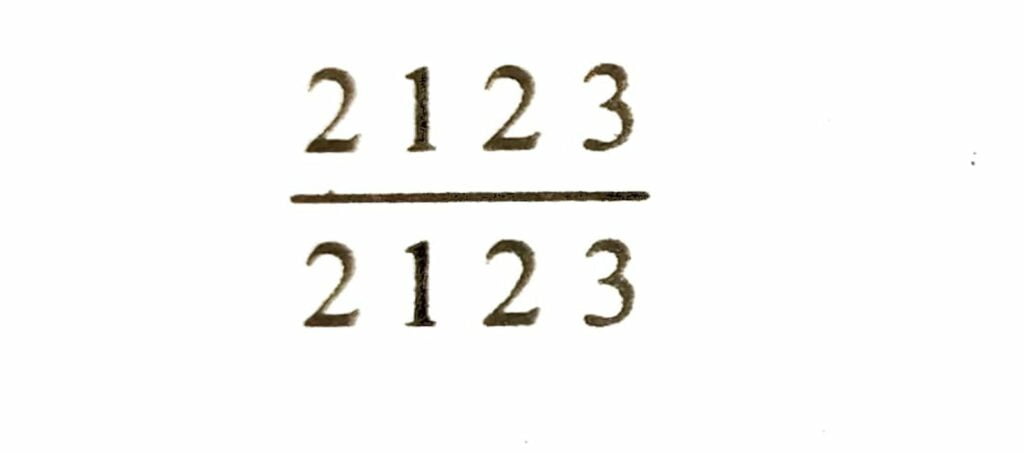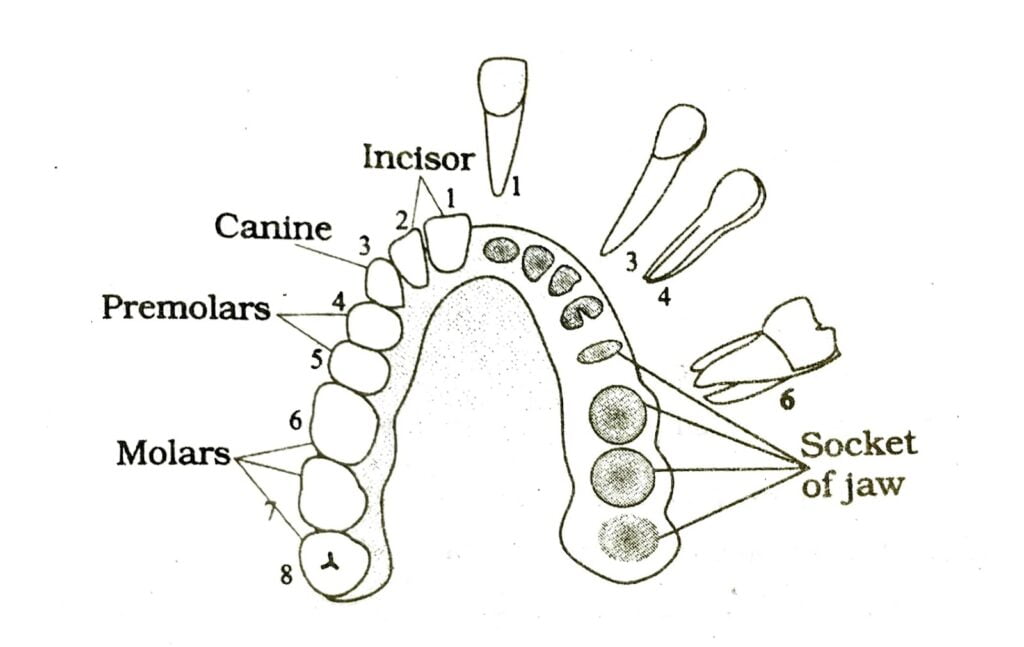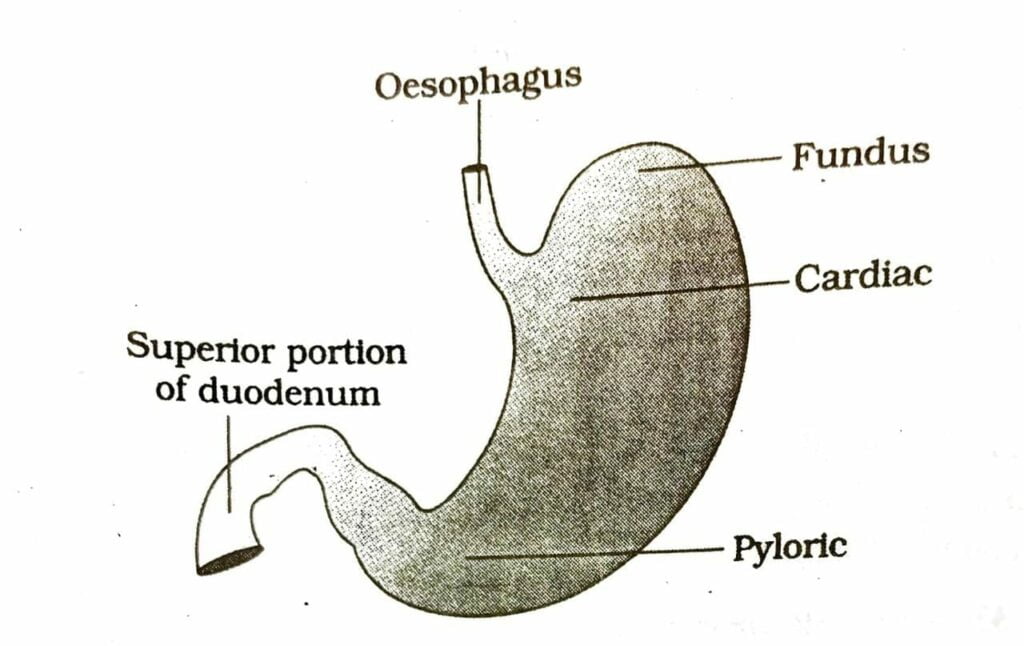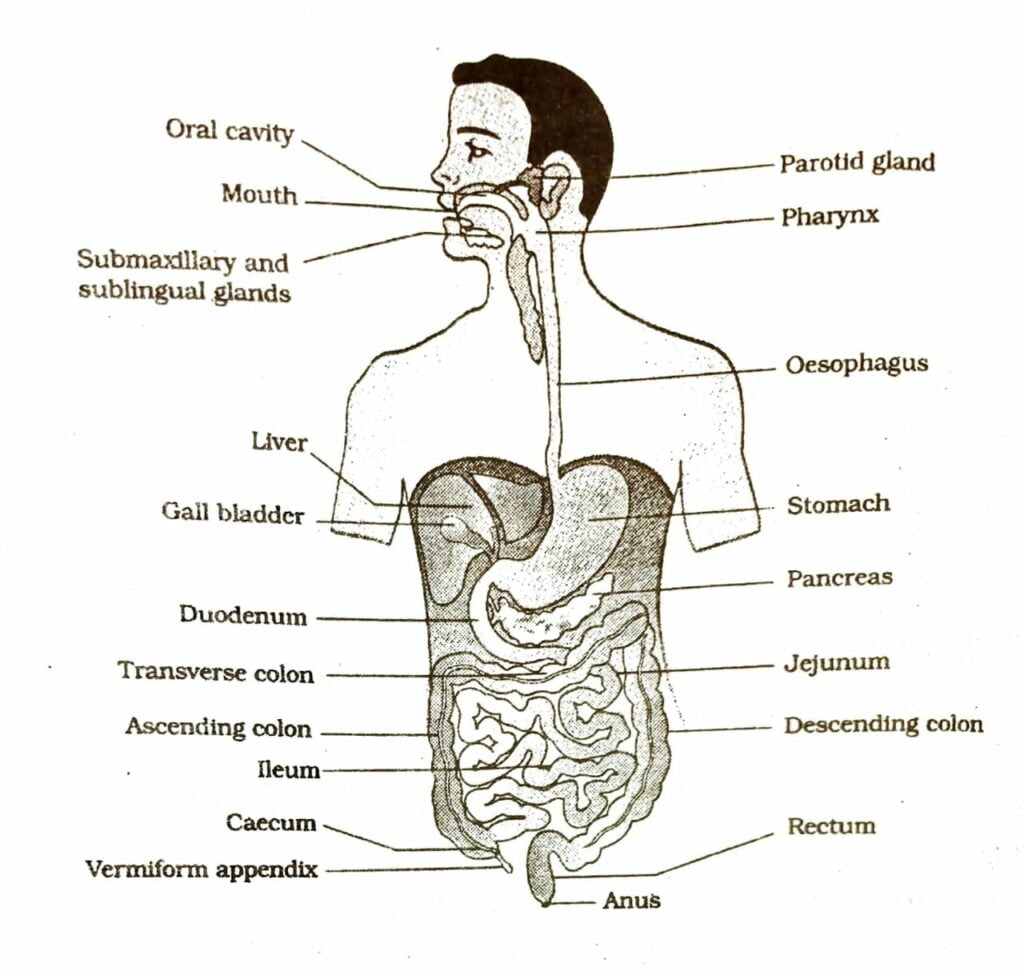Class 11 Biology Chapter 16 Digestion and Absorption, AHSEC Class 11 Biology Question Answer, HS 1st year Biology notes to each chapter are provided in the list so that you can easily browse throughout different chapters Assam Board Class 11 Biology Chapter 16 Digestion and Absorption Question Answer and select needs one.
Class 11 Biology Chapter 16 Digestion and Absorption
Also, you can read the SCERT book online in these sections Solutions by Expert Teachers as per SCERT (CBSE) Book guidelines. These solutions are part of SCERT All Subject Solutions. Here we have given Assam Board Class 11 Biology Chapter 16 Digestion and Absorption Solutions for All Subjects, You can practice these here.
Digestion and Absorption
Chapter – 16
VERY SHORT ANSWER TYPE QUESTIONS
Q.1. What is digestion?
Ans :- The process of conversation of complex food substances to simple absorbable form is called digestion.
Q.2. Give the dental formula in human being.
Ans :- Arrangement of teeth in each half of the upper and lower jaw in the order incisors (i), canine (c), premolar (PM), and molars (M) is represented by a dental formula which in human being is

Q.3. Where is our stomach located?
Ans :- Our stomach is located in the upper left portion of the abdominal cavity.
Q.4. Name the digestive glands associated with the alimentary gland.
Ans :- The digestive glands associated with the alimentary gland are salivary gland, liver and pancreas.
Q.5. Where is liver located in our body?
Ans :- Liver is located in the abdominal cavity just below the diaphragm.
Q.6. What is deglutition?
Ans :- Deglutition is the other name for swallowing.
Q.7. Name the bile pigments.
Ans :- Bilirubin and biliverdin.
Q.8. Name the duet through which pancreatic and bile juice are released.
Ans :- Hepato pancreatic duet.
Q.9. Name the organ which is affected in jaundice.
Ans :- Liver.
Q.10. What happen to skin and eyes when he/she suffer from jaundice?
Ans :- Skin and eyes turn yellow due deposition of bile pigment.
Q.11. What is the other name given to intestinal juice.
Ans :- Succus entericus.
Q.12. Name the largest gland present in our body.
Ans :- Liver.
Q.13. Mention 1 important function of villi?
Ans :- It help in absorption of food.
Q.14. Name 2 carbohydrate splitting enzyme.
Ans :- Ptyalin and Maltase.
Q.15. Name the enzyme which help in converting Nucleic acids to nucleosides.
Ans :- Nucleases.
Q.16. Name 2 protein splitting enzymes?
Ans :- Pepsin and trypsin.
Q.17. Name the only acid present in our alimentary canal.
Ans :- Hcl.
Q.18. Why some people suffer from indigestion?
Ans :- (i) Food poisoning.
(ii) Over eating.
(iii) Inadequate secretion of enzyme.
SHORT ANSWER TYPE QUESTIONS
Q.19. Why our dentition is also known as diphyodont?
Ans :- In us we have 2 sets of teeth. During our life time a set of temporary milk teeth replaced by a set of permanent or adult teeth. This type of dentition is termed as diphyodont.
Q.20. Name the different parts of small intestine.
Ans :- U-shaped duodenum, a long coiled middle portion called jejunum and a highly coiled ileum.
Q.21. Name the 3 parts of colon/large intestine.
Ans :- An ascending part, A transverse part and a descending part.
Q.22. Name the 4 layers of the wall of the alimentary canal?
Ans :- Serosa, muscularis, submucosa and mucosa.
Q.23. What are hepatic lobules?
Ans :- Hepatic lobules are the structural and functional unit of livers containing hepatic cells and are arranged in the form of cords.
Q.24. What is Glisson’s capsules?
Ans :- Glisson’s capsules is a thin connective tissue sheath with the help of which it covers each of the hepatic lobules.
Q.25. Name the cells which secretes bile and where it is stored?
Ans :- Bile is secreted by hepatic cell and is stored in gall bladder.
Q.26. Why pancreas is also considered as compound gland?
Ans :- Pancreas contain both endocrine portion secreting hormones (insulin and glucagons) and exocrine portion secreting alkaline pancreatic juice containing enzymes. It consist of both exocrine & endocrine portion so it is termed as compound gland.
Q.27. Mention the major function perform by the buccal cavity of human being.
Ans :- Two major functions performed by buccal cavity are –
(i) Mastication of food. and
(ii) Facilitation of swallowing.
Q.28. What is Rennin?
Ans :- Rennin is a proteolytic enzymes found in gastric juice of infants which helps in the digestion of milk protein.
Q.29. Amylase is secreted by 2 glands. Name them. What role does it plays in the digestion process.
Ans :- It is secreted by salivary glands and pancreas.
It helps in digesting complex carbohydrates to simple carbohydrates.
Q.30. How absorption of fructose takes place?
Ans :- Absorption of fructose takes place through facilitated transport system ie Fructose are absorbed with the help of cannier ions like Na+.
Q.31. What role does mucus and bicarbonate plays in the stomach?
Ans :- The mucus and bicarbonates present in the gastric juice play an important role in lubrication and protection of the mucosal epithelium from excoriation by Hcl.
Q.32. Name all the enzymes present in pancreatic juice.
Ans :- Trypsinogen, Chymotrypsinogen, pro peptidases, Amylase, lipase and nucleases.
Q.33. Name all the enzymes present in the intestinal juice?
Ans :- Enterokinase, Aminopeptidases, Dipeptidase, Lipase, Nucleotidases, Sucrase, maltase and lactase.
Q.34. With the help of diagram show the arrangement of different types of teeth in the jaws on the side and the socket on the other side.
Ans :-

Q.35. With the help of diagram show the anatomical regions of human stomach.
Ans :-

Q.36. Name the different types of cell present in the gastric glands and also write their secretion.
Ans :- (a) Mucus neck cell – mucus.
(b) Parietal/oxyntic cell – Hcl and intrinsic factor (essential for absorption of VB 12).
(c) Peptic or chief cell – pepsinogen.
Q.37. Write the function of – Hcl, Enterokinase Bile.
Ans :- Hcl – Provide acidic medium.
Convert pepsinogen to pepsin
Enterokinase – Activate trypsinogen to trypsin which in turn activate other enzyme in the pancreatic juice.
Bile – Emulsification of food fat particles.
Q.38. Distinguish between bolus and chyme.
Ans :- When food is masticated and mixed with saliva in the buccal cavity it is known as bolus and when partially digested food enters stomach it thoroughly mixes with gastric juice and the new product is termed as bolus.
Q.39. What happens to food when it reaches stomach.
Ans :- As soon as the food reach the stomach, it get mixed with gastric juice contain Hcl, protein splitting enzymes and small amount of lipare and mucus. Hcl help in converting the food into acidic medium. Also it convert pepsinogen to pepsin which in turn help in converting complex protein to simpler form and little bit of digestion of fats too take place with he help of lipase. Mucus and bicarbonate present in gastric juice helps the mucosal epithelium from acidic nature of Hcl.
LONG ANSWER TYPE QUESTIONS
Q.1. How absorption of glycerol takes place.
Ans :- Fatty acid and glycerol being insoluble in H₂O cannot be absorbed directly by blood. They are 1ˢᵗ converted into small droplets called micelles (by bile salt) and more into the intestinal mucosa. There they are re-formed into very small protein coated fat globules called chylomicrons which are transported into the lymph vessels in the villi. These lymph vessels ultimately released the absorbed substances into the blood stream.
Q.2. Explain the process of digestion of carbohydrates in human being.
Ans :- In human being digestion of carbohydrates starts in the buccal cavity. In mouth when the food comes in contact with saliva, then salivary amylase help in digesting starch into maltose. From the mouth the food reaches stomach but digestion of carbohydrates doesn’t take place. From the stomach the partially digested food reaches small intestine where further digestion of carbohydrates takes place.
“Carbohydrates are hydrolyzed by pancreatic amylase into disaccharides. Further conversion of disaccharides into monosaccharides takes when the enzymes in the succus entericus act on it a of Maltose maltase glucose+glucose.

In this way complex carbohydrates are converted into simpler form.
Q.3. Give the diagram of the human digestive system and write the function if
(a) Gall bladder.
(b) Epiglottis.

Function
(a) Gall bladder – It store bile secreted by liver.
(b) Epiglottis – A cartilaginous flap which prevent the entry of food into the glottis.

Hi, I’m Dev Kirtonia, Founder & CEO of Dev Library. A website that provides all SCERT, NCERT 3 to 12, and BA, B.com, B.Sc, and Computer Science with Post Graduate Notes & Suggestions, Novel, eBooks, Biography, Quotes, Study Materials, and more.


